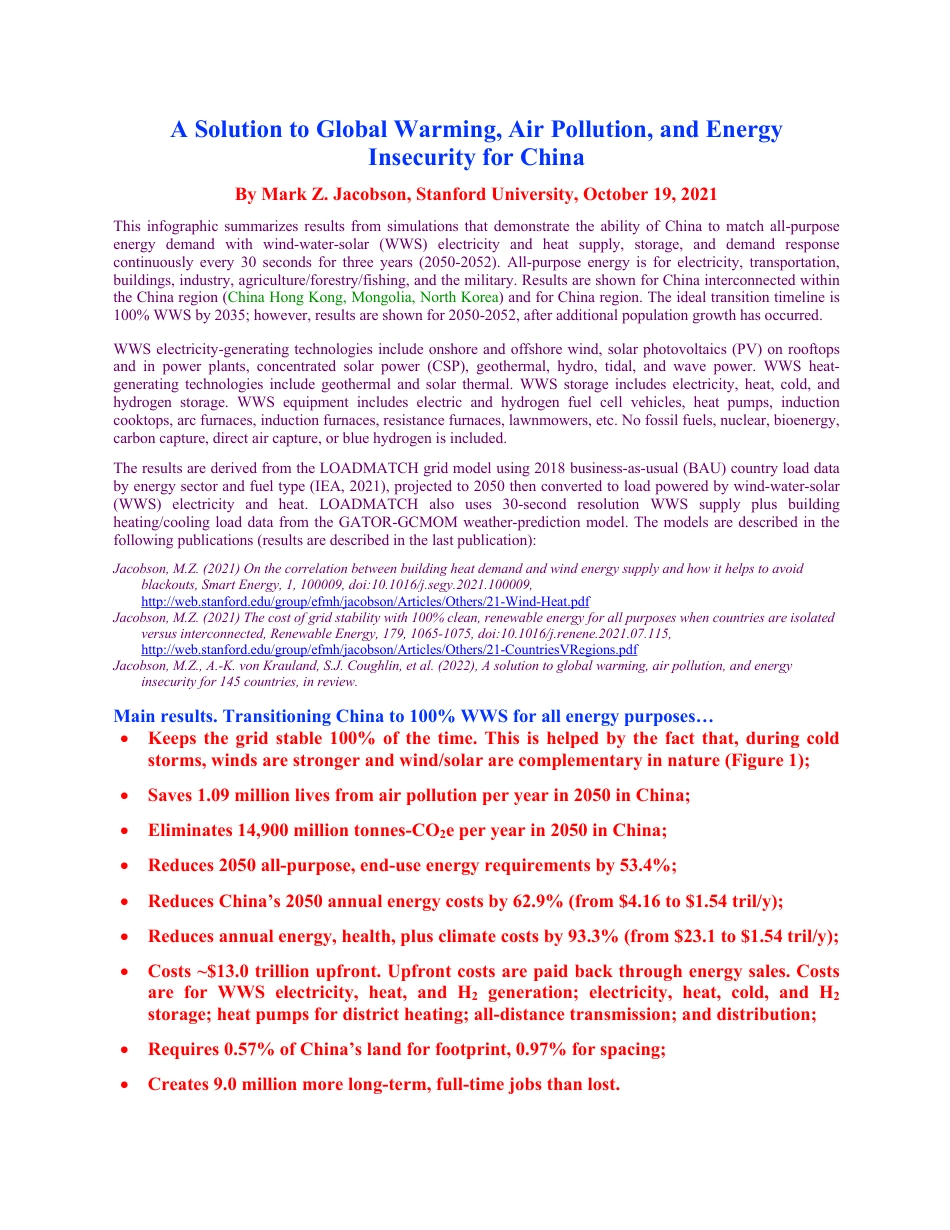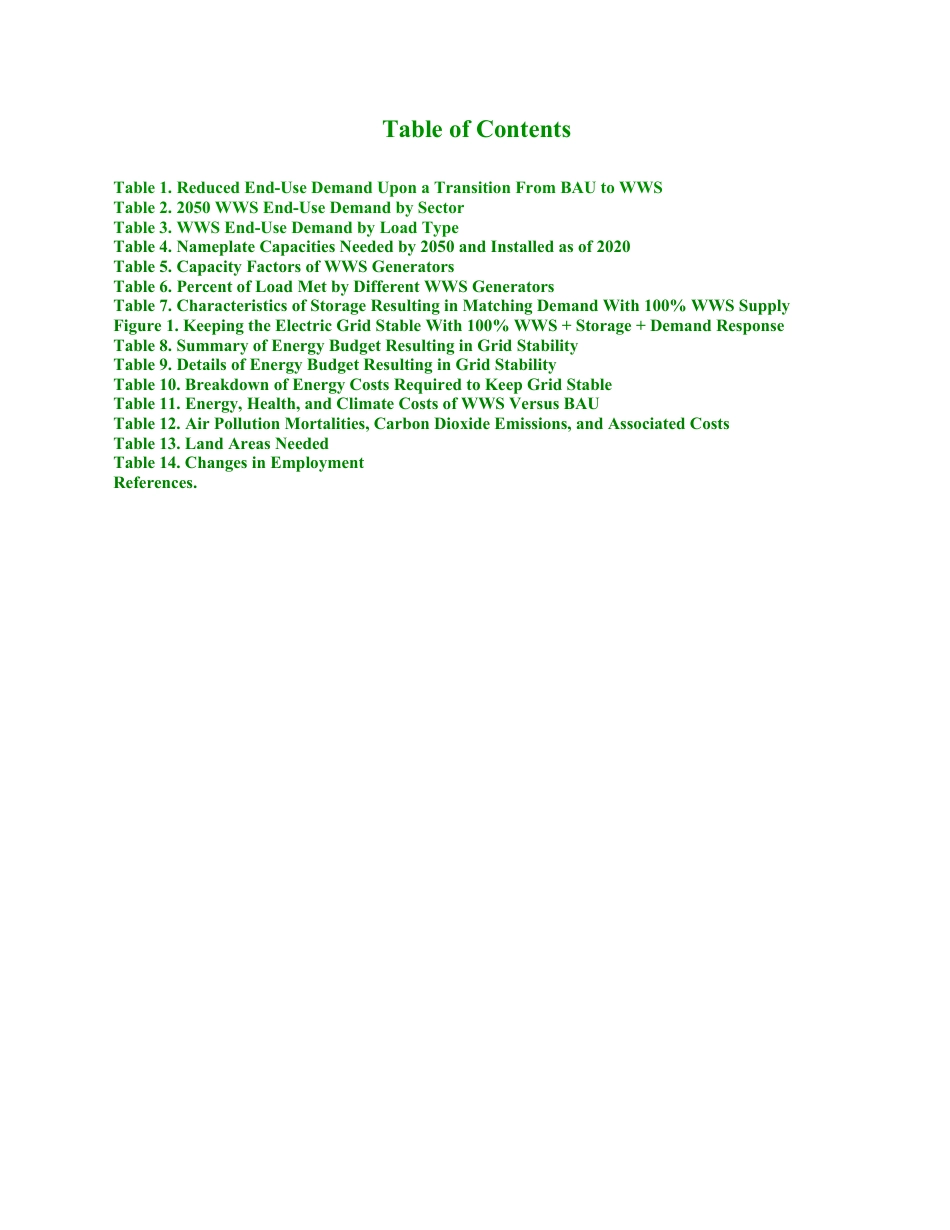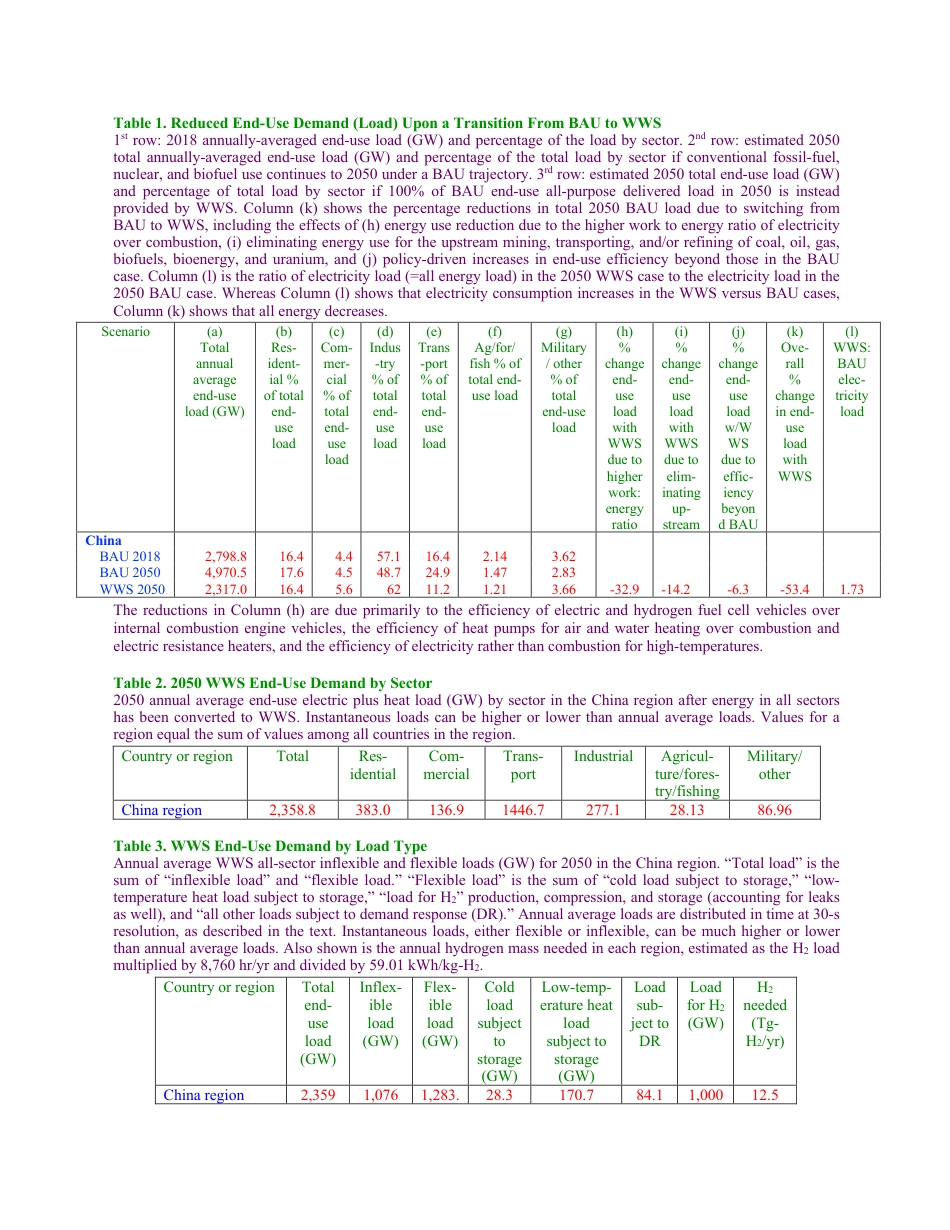A Solution to Global Warming, Air Pollution, and Energy Insecurity for China By Mark Z. Jacobson, Stanford University, October 19, 2021 This infographic summarizes results from simulations that demonstrate the ability of China to match all-purpose energy demand with wind-water-solar (WWS) electricity and heat supply, storage, and demand response continuously every 30 seconds for three years (2050-2052). All-purpose energy is for electricity, transportation, buildings, industry, agriculture/forestry/fishing, and the military. Results are shown for China interconnected within the China region (China Hong Kong, Mongolia, North Korea) and for China region. The ideal transition timeline is 100% WWS by 2035; however, results are shown for 2050-2052, after additional population growth has occurred. WWS electricity-generating technologies include onshore and offshore wind, solar photovoltaics (PV) on rooftops and in power plants, concentrated solar power (CSP), geothermal, hydro, tidal, and wave power. WWS heat-generating technologies include geothermal and solar thermal. WWS storage includes electricity, heat, cold, and hydrogen storage. WWS equipment includes electric and hydrogen fuel cell vehicles, heat pumps, induction cooktops, arc furnaces, induction furnaces, resistance furnaces, lawnmowers, etc. No fossil fuels, nuclear, bioenergy, carbon capture, direct air capture, or blue hydrogen is included. The results are derived from the LOADMATCH grid model using 2018 business-as-usual (BAU) country load data by energy sector and fuel type (IEA, 2021), projected to 2050 then converted to load powered by wind-water-solar (WWS) electricity and heat. LOADMATCH also uses 30-second resolution WWS supply plus building heating/cooling load da...



